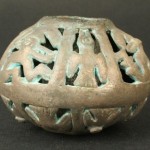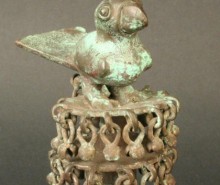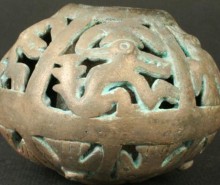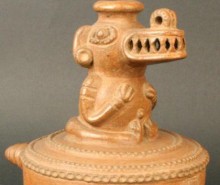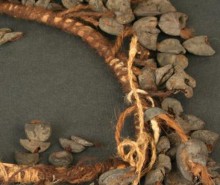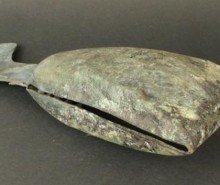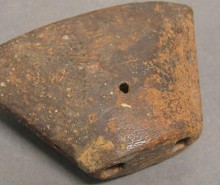Staff head – rattle
This rattle is made of metal (silver) and is an artifact of the Vicús culture, which inhabited the northern coast of modern-day Peru between 500 BCE and 500 CE.
It is an indirect-blow idiophone; that is, when it is moved, four metal balls strike the walls of the vessel, making sound. It was originally mounted on top of a wooden staff that was moved like a scepter.
The instrument was made using the lost wax method and has a pierced spheroid shape with zoomorphic decorations. The upper band is divided into six modules, four of which are of similar size and depict a seated quadruped in full profile. The tail ends in three triangles that hold a large headdress in the shape of a tumi (Andean ceremonial knife). The smaller two modules fit between the two pairs of quadrupeds and depict a flying bird with beak raised. The lower band consists of eight modules, of two different types: four showing the same bird figure, and four showing a schematic view of a fish or manta ray.
Dimensions: 520 mm high x 730 mm long x 730 mm wide (approx 20” x 29” x 29”).
Ver ficha de documentación organológica
Part Code: MCHAP 427






































